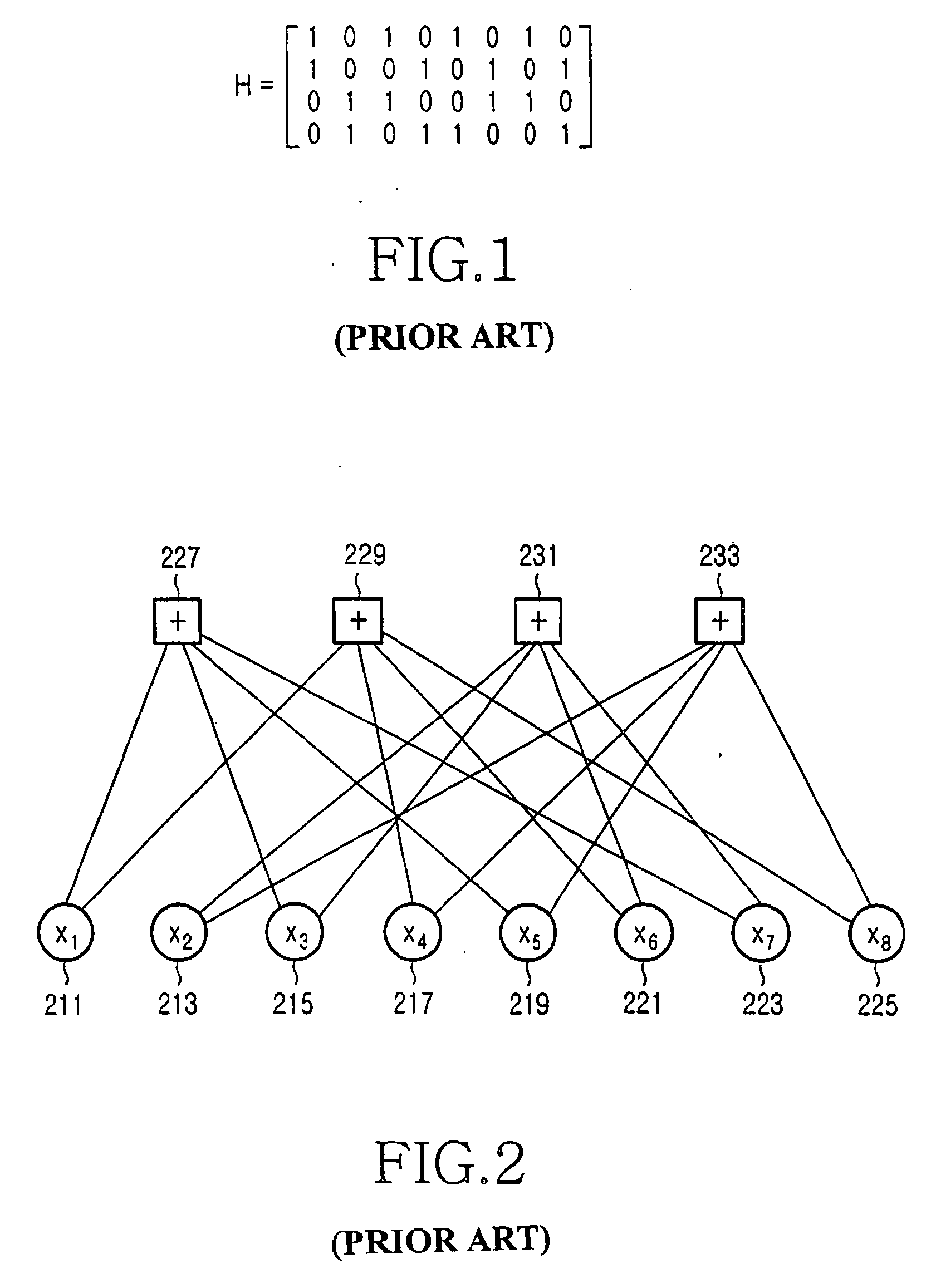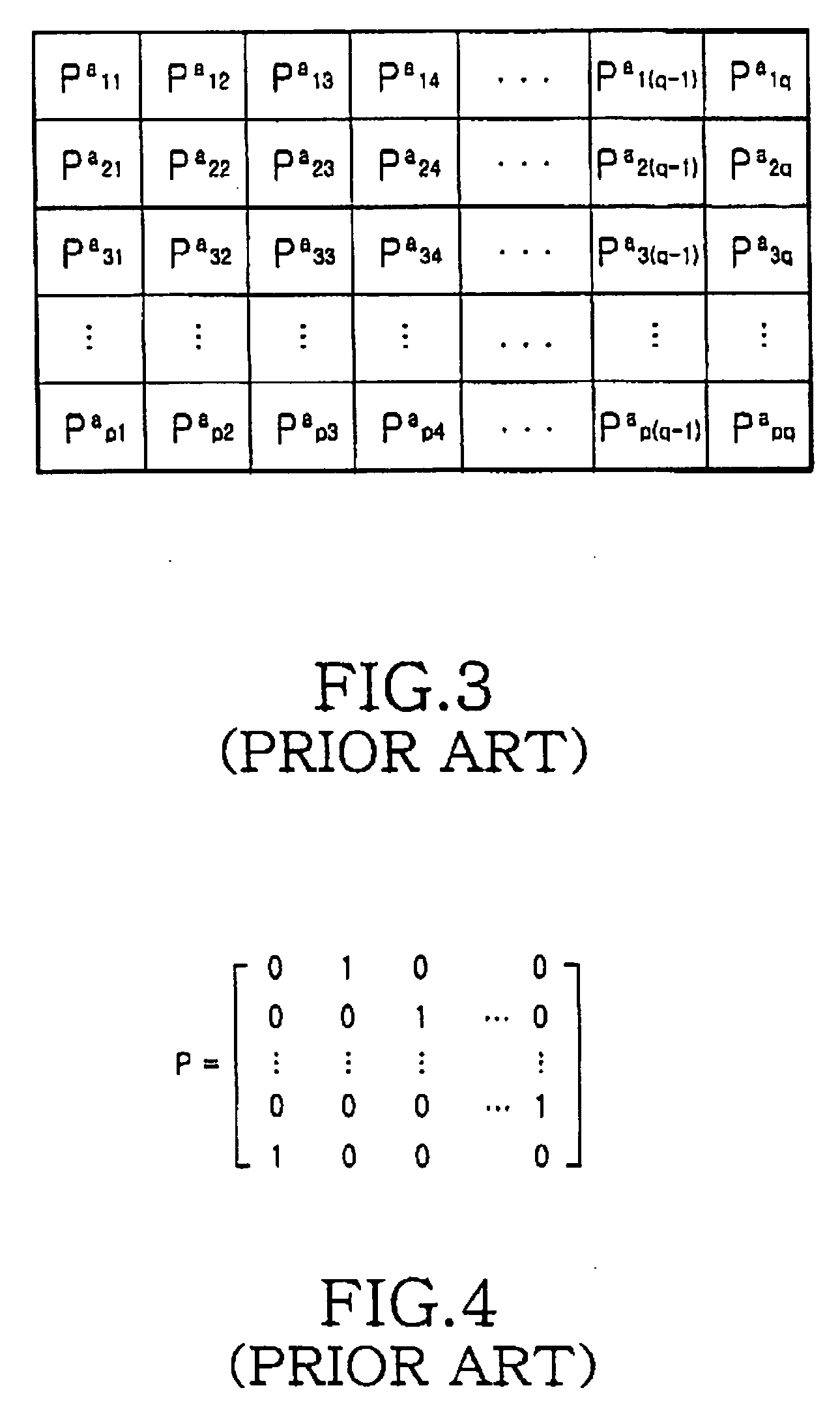Apparatus and method for coding/decoding block low density parity check code in a mobile communication system
a mobile communication system and low density parity check technology, applied in the field of mobile communication system, can solve the problems of mobile communication system inevitably experiencing errors, ldpc code suffering from performance degradation, loss of information data, etc., and achieve the effect of maximizing the capability for error correction
- Summary
- Abstract
- Description
- Claims
- Application Information
AI Technical Summary
Benefits of technology
Problems solved by technology
Method used
Image
Examples
Embodiment Construction
[0076] Preferred embodiments of the present invention will now be described in detail with reference to the annexed drawings. In the following description, a descriptions of known functions and configurations incorporated herein have been omitted for conciseness.
[0077] The present invention proposes a scheme for coding and decoding a high-performance irregular low density parity check (LDPC) code. The present invention proposes a scheme for coding and decoding an irregular LDPC code in which the length of the minimum cycle on a factor graph is maximized, the coding complexity is minimized, and the degree distribution on the factor graph is optimized.
[0078] The term “cycle” as it relates to a factor graph of an LDPC code refers to a loop formed by the edges connecting the variable nodes to the check nodes in the factor graph, and the length of the cycle is defined as the number of edges constituting the loop. A cycle that is long in length means that the number of edges connecting ...
PUM
 Login to View More
Login to View More Abstract
Description
Claims
Application Information
 Login to View More
Login to View More - R&D
- Intellectual Property
- Life Sciences
- Materials
- Tech Scout
- Unparalleled Data Quality
- Higher Quality Content
- 60% Fewer Hallucinations
Browse by: Latest US Patents, China's latest patents, Technical Efficacy Thesaurus, Application Domain, Technology Topic, Popular Technical Reports.
© 2025 PatSnap. All rights reserved.Legal|Privacy policy|Modern Slavery Act Transparency Statement|Sitemap|About US| Contact US: help@patsnap.com



